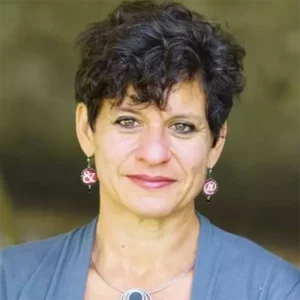This Passover, we are all segments of the orange on our Seder plates

Seder plate with orange. Courtesy of iStock
This is an adaptation of our weekly Shabbat newsletter, sent by our editor-in-chief on Friday afternoons. Sign up here to get the Forward’s free newsletters delivered to your inbox. And click here for a PDF of stories to savor over Shabbat and Sunday that you can download and print.
I’m not exactly sure when I started putting an orange on the Seder plate. I do know that I was one of the legions who initially got the backstory wrong about this new custom.
I had heard that Prof. Susannah Heschel, daughter of Rabbi Abraham Joshua Heschel, had come up with the idea after some curmudgeon dismissed the idea of women rabbis by saying, “A woman on the bimah is like an orange on the Seder plate!” In fact, as Professor Heschel has written in various venues, it was a defiant response to a rebbetzin having said, “There’s as much room for a lesbian in Judaism as there is for a crust of bread on the seder plate.”

Professor Susannah Heschel Courtesy of Dartmouth College
For me, the specific origin story is less important, because what the orange has come to symbolize is how hard it can be, at one point in time, to even imagine what “normal” might look like in the future. Even as we are putting ourselves in the shoes of our ancestors walking from slavery to freedom, the orange reminds us that the next generations will continue to evolve our customs.
My children cannot imagine a Judaism without lesbians: that would mean our synagogue without its cantor. They may well know more female rabbis than male ones. So we don’t need an orange to make room for those possibilities at our table — they are the realities of every Jewish thing we do. Instead, I see the orange as a broader symbol of the ability of our Judaism to change, to progress, without losing its essence. And of the essentialness of that progress.

Seder plate with orange. Courtesy of iStock
A year ago, in those early, frightening weeks as the pandemic took hold, we were scrambling to navigate a Passover different from all other Passovers. How to reimagine our grandmother’s brisket recipe for a foursome instead of a crowd? Where to shop for specialty items safe from the crowd? What does a Seder for one look like? Could we create a Zoom Seder experience — and teach great-Aunt Rena how to sign on?
It wasn’t as bad as we feared. In this article, many readers shared stories of Seders that felt more meaningful, of feeling more viscerally connected to the Haggadah’s plagues and the idea of ‘mitzrayim’ — a narrow place. They were thrilled to be able to share the holiday with faraway relatives and friends.
Yes, we missed the feeling of crowding around a big table laden with food, even of gossiping over the mountain of dishes afterward. But we didn’t talk over each other as much. We prepared more and engaged with the text better.
Alongside “next year in Jerusalem,” many of us said, “next year in person.” Now, next year is here, and we are in a kind of limbo: with vaccinations picking up, but COVID cases and deaths still far too high, we are cautiously reopening and recalibrating our understanding of risk. We seem to have left the Egypt of lockdown but still feel far from the Promised Land of her immunity. We are in the Red Sea, walking to a future we still have to design.
This year, the orange on our Seder plate symbolizes hope in that uncertainty. It represents all the amazing innovations we found during this pandemic year to adapt and progress our Judaism, our work, our families and everything in between. It stands for the way Zoom shiva allowed people in faraway countries to comfort mourners, and the way college students helped homebound seniors sign up for vaccinations.
When I spoke to Heschel this week, she shared her tradition of opening and eating the orange, which I have not been doing (but will definitely start). “The first part of the Seder lasts a very long time in my house, several hours, and people are getting hungry,” she noted. “The orange freshens people up a little, gives them sugar — when I see people start to nod, I’ll say, ‘What’s different here? Why do we have the orange?’ and I tell the story.”
(Side note: I’ve been to Seders where “karpas,” the ritual eating of a green vegetable, is a substantive spread of salads and hors d’oeuvres, instead of a meager stalk of celery — it really helps.)

oranges Courtesy of iStock
This, too, struck me as a perfect metaphor for our pandemic year. Those segments of the orange symbolize the concept of collective responsibility, of flattening the curve, of everyone needing to get vaccinated not only to protect themselves but to make the world safe for each other.
The Talmudic phrase, “kol Yisrael arayvim zeh bazeh” — all Israel is responsible for one another — comes to mind. We are all segments of a single orange, the orange on our Seder plates.
Watch: A Hybrid Passover
The orange was one of many Seder symbols we talked about at a Zoominar Thursday featuring Rabbi Jay Michaelson, who writes our annual Haggadah guide; Marcella White Campbell of Be’chol Lashon; Al Rosenberg from OneTable.org; and Rabbi Elie Kaunfer of Hadar.
The experts offered many deep insights, as well as practical tips for how to approach make this unusual Passover, and all Passovers, meaningful and relevant. And many in the audience shared their own experiences and reflections via chat. Here’s a few:
DAVID FINK: “My favorite thing I’ve done at a seder is to allow people attending to submit charities as candidates to receive an $100 donation designed to give people freedom. We had discussions about freedom and how each potential recipient would help give freedom. In the end, we donated over $1,000 because others added to the pot.”
LISA LESSER: “I look at the Haggadah as the jumping off point. For some people, all they can do is read the Seder — and then, Dayenu. We we use inserts from 17 Haggadot, sing crazy songs, etc. etc. Each attempt to do this can be enough.”
MISSY LEE: “For my Zaide to soon be able to get his vaccine @ 85-plus makes him feel like freedom is on the horizon.”
Let me know how you use an orange at the Seder, or other creativity you’re bringing to the holiday this year: [email protected].
Your Weekend Reads.
(You can download and print a PDF of these stories by clicking here.)
Jodi Rudoren is Editor-in-Chief of the Forward. Follow her on Twitter @rudoren, or email [email protected].























